Recent Fire Damage Posts
Cleanup After a Fire
8/28/2023 (Permalink)
What to do after a fire
- Limit movement in the home to prevent soot particles from being embedded into upholstery and carpets.
- Keep hands clean so as not to further soil upholstery, walls, and woodwork.
- Place clean towels or old linens on rugs, upholstery, and carpet traffic areas.
- If electricity is off, empty freezer and refrigerator and prop doors open.
- Clean and protect chrome with a light coating of petroleum jelly or oil.
- Wash houseplants on both sides of leaves.
- Change the HVAC filter.
- Tape double layers of cheesecloth over air registers.
What not to do after a fire
- Don't attempt to wash any walls or painted surfaces or shampoo carpet or upholstery without contacting us.
- Don't attempt to clean any electrical appliances that may have been close to fire, heat, or water without consulting an authorized repair service.
- Don't use any canned or packaged food or beverages that may have been stored near the fire, heat, or water.
- Don't turn on ceiling fixtures if the ceiling is wet. The wiring may be damaged.
- Don't send garments to an ordinary dry cleaner. Improper cleaning may set a smoke odor.
Fire Damage Restoration Process
7/25/2022 (Permalink)
After the fire trucks leave, your home likely suffers from fire and smoke damage and extensive water damage from the firefighting efforts. SERVPRO of South Chesterfield/Wildwood has the specialized fire restoration training needed to restore your home to pre-fire condition.
Every fire damage event is a little different, and requires a unique solution, but the general process stays the same. The steps listed below illustrate our process for the “typical” fire damage emergency.
Step 1: Emergency Contact
The restoration process begins when you give us a call. Our specialist will ask a series of questions regarding the fire damage event that will help us arrive quickly with the appropriate equipment and resources.
Step 2: Inspection and Fire Damage Assessment
We will carefully inspect and test adjoining rooms of your property to determine the extent of the fire, smoke and soot damage. This step is crucial to developing a plan of action.
Step 3: Immediate Board-Up and Roof Tarp Service
Fire damage can often compromise windows, walls, and roofs. To maintain security and to protect against further damage, SERVPRO of South Chesterfield/ Wildwood can board up missing windows and walls and place tarps on damaged roofs.
Step 4: Water Removal and Drying (if water damage is present)
The water removal process begins almost immediately and removes the majority of water. We will then use dehumidifiers and air movers to remove the remaining water and complete the drying process.
Step 5: Removal of Smoke and Soot from all Surfaces
SERVPRO of South Chesterfield/Wildwood uses specialized equipment and techniques to remove smoke and soot from ceilings, walls, and other surfaces.
Step 6: Cleaning and Sanitizing
We will clean all of the restorable items and structures that were damaged by the fire. We use a variety of cleaning techniques to restore your belongings to pre-fire condition. We’re also trained to remove odors using industrial air scrubbers and fogging equipment.
Step 7: Restoration
Restoration is the final step – getting your home or business to its pre-fire condition. Restoration may involve minor repairs, such as replacing drywall, painting, and installing new carpet; or it may entail major repairs such as the reconstruction of various areas or rooms in a home or business.
Firework Safety
6/9/2022 (Permalink)
We are quickly approaching one of our nation’s favorite holidays, Independence Day. Popular traditions are celebrating with family barbeques, homemade ice cream and of course, fireworks. Fireworks can be very entertaining; however, it’s important we practice safety during this time. According to the NFPA, “Fireworks started an estimated 19,500 fires in 2018, including 1,900 structure fires, 500 vehicle fires, and 17,100 outside and other fires. These fires caused five deaths, 46 civilian injuries, and $105 million in direct property damage.” Below are a few ideas to get into the patriotic spirit, without fireworks:
- Use glow sticks, they glow in the dark and are a safe alternative to a sparkler. Fun for all ages.
- Loud and proud. Noise makers are sure to make a statement. They can be found at local party supply stores or make your own.
- Outdoor movie night. Set up a screen and projector. Don’t forget the bug spray!
- Red, white, and blue silly string…fun for all ages.
- Make a patriotic craft with the family.
- Throw a birthday party for the USA, and don’t forget the cake!
SERVPRO of South Chesterfield/Wildwood
636-537-5400
Dry Ice Blasting
4/19/2022 (Permalink)
If a fire has occurred in your home, it will leave behind soot that needs to be removed to eliminate any odor within your home. Depending on how extensive the damage is will determine which methods of cleaning the professionals at SERVPRO of South Chesterfield/Wildwood will use. One of the techniques we like to use is dry-ice blasting. This can be used on something like brick to remove the smoke and black residue that is left behind after a fire. Dry-ice blasting is a form of carbon dioxide cleaning, where dry ice, the solid form of carbon dioxide, is accelerated in a pressurized air stream and directed at a surface in order to clean it. Take a look at a video on our Facebook Page to see how this technique is performed: Dry Ice Blasting.
SERVPRO of South Chesterfield/Wildwood
636-537-5400
Outdoor Fire Pit and Fireplace Safety
3/1/2022 (Permalink)
According the American Society of Landscape Architects, fire pits, or outdoor fireplaces, are the number one requested design feature today. They can add ambiance as well as warmth on a cool night. It’s important to practice safety when using these outdoor features. Outdoor fire pits and fireplaces are a wonderful asset to your outdoor living space; however, they can cause damage to your home if not operated properly. There are a couple things to keep in mind when building your fire. According to HGTV, when it comes time to actually start a fire, it’s important to reminder to keep your fire small. There’s no need for a blazing bonfire, and the bigger the fire, the greater the potential disaster. Another way to avoid a problem is to make sure your fire pit is at least 10 feet away from your home. Following these tips will help to avoid causing damage to your home.
SERVPRO of South Chesterfield/Wildwood
636-537-5400
Burning Candles Safely
2/22/2022 (Permalink)
A fire can be devastating to your home and all of your personal belongings. One of the most common reasons for a fire in your home is due to burning candles. It’s important to be sure you’re taking the proper precautions to ensure you’re burning your candles safely. According to the National Fire Protection Association there are some steps you can take to help prevent a fire.
- Use candle holders that are sturdy, and won’t tip over easily.
- Put candle holders on a sturdy, uncluttered surface.
- Light candles carefully. Keep your hair and any loose clothing away from the flame.
- Don’t burn a candle all the way down – put it out before it gets too close to the holder or container.
- Never use a candle if oxygen is used in the home.
- Have flashlights and battery powered lighting ready to use during a power out outage. Never use candles.
Lastly, make sure you are double checking you have blown out all of your candles before leaving your home or going to bed at night. If you follow these tips, this can help in preventing a fire in your home.
SERVPRO of South Chesterfield/Wildwood
636-537-5400
Fire Protection Month
10/13/2021 (Permalink)
The month of October is Fire Protection Month. This is the perfect time to educate and talk with your whole family about fire safety – include testing alarms, changing the batteries or upgrading to 10-year sealed battery alarms, how to use a fire extinguisher and escape route planning. According to First Alert:
- 3 of every 5 home fire deaths resulted from fires in homes with no working smoke alarms
- Less than 50% of homeowners have an escape plan
- Carbon monoxide (CO) is the #1 cause of accidental poisoning in the US
- 60% of consumers do not test their smoke and CO alarms monthly
- Only 47% of people report having CO alarms in their home
- Just 43% of homeowners have an escape plan
- Unattended cooking is the #1 cause of home fires
Addressing some of the above statistics can help save a life in an emergency. It’s always important to make sure your smoke and carbon monoxide detectors are working properly as well as making sure your family has a plan. Fire Protection Month is a great time to have a chat with your family to make sure everyone is on the same page in case of an emergency.
What NOT To Do After a Fire
7/23/2021 (Permalink)
We often hear of tips of how to prepare your family if a fire occurs or even what to do after the fire has occurred; however, we don’t often hear of things we should avoid after a fire. Below are a few tips of things you should NOT do after a fire has occurred in your home.
- Don't attempt to wash any walls or painted surfaces or shampoo carpet or upholstery without contacting SERVPRO of South Chesterfield/Wildwood.
- Don't attempt to clean any electrical appliances that may have been close to fire, heat or water without consulting an authorized repair service.
- Don't use any canned or packaged food or beverages that may have been stored near the fire, heat or water.
- Don't turn on ceiling fixtures if ceiling is wet. The wiring may be damaged.
- Don't send garments to an ordinary dry cleaner. Improper cleaning may set smoke odor.
Avoiding a Grill Fire
6/9/2021 (Permalink)
We’re entering the summer months which typically means it’s time for outdoor grilling. It’s important to make sure you and your family are taking the proper steps to ensure safety measures are in place. According to the National Fire Protection Association, seven out of every 10 adults in the U.S. have a grill or smoker. July is the peak month for grill fires (18%), including both structure, outdoor or unclassified fires, followed by June (15%), May (13%) and August (12%). Here are some safety tips the NFPA has given to help prevent grill fires in your home:
- Propane and charcoal BBQ grills should only be used outdoors.
- The grill should be placed well away from the home, deck railings and out from under eaves and overhanging branches.
- Keep children and pets at least three feet away from the grill area.
- Keep your grill clean by removing grease or fat buildup from the grill and in trays below the grill.
- Never leave your grill unattended.
- Always make sure your gas grill lid is open before lighting it.
Air Fryer Safety
4/19/2021 (Permalink)
Air Fryer Safety
One of the most popular trends in cooking right now is the use of air fryers. People are trying to be more health conscious in their food choices, and this has allowed them to do so. According to Allied Market Research, “The air fryer market size was valued at $894.3 million in 2018, and is expected to reach $1,425.7 million by 2026, registering a CAGR of 6.1% from 2019 to 2026.” That being said, there are some safety measures people should take to ensure they don’t cause a fire while cooking. Below we’ve highlighted some “Dos” and “Don’ts” of using an air fryer.
DON’T – Use cooking sprays with propellants, aerosol sprays or chemical based non-stick sprays. They might start to break down the coating on many non-stick baskets and trays.
DO – Invest a few dollars in quality oil spray or pump and use quality high flash point oil.
SERVPRO of South Chesterfield/Wildwood
636-537-5400
Process After a Fire
3/1/2021 (Permalink)
A fire in your home, big or small, can be very scary for you and your family. The idea of putting your home back together after something like this happens can be an intimidatingly large job. That’s where we come in. We’ll take you through the process from cleaning the structure and contents of your home, to helping put it back to its original condition. One of the first things we’ll do with you is walk through your home and evaluate what we feel can be cleaned and saved and what needs to be replaced. Our goal is to help make this as easy as possible on you. We’ll work closely with your insurance company to be able to provide you the best possible service, with constant communication throughout the process. We hope this is something you never have to deal with, but if you do, call SERVPRO of South Chesterfield/Wildwood. We’ll make it “Like it never even happened.”
SERVPRO of South Chesterfield/Wildwood - Fire Damage Repair and Restoration
636-537-5400
Space Heater Safety
2/22/2021 (Permalink)
Space Heater Safety
We all want to protect our friends and family from a fire occurring in our homes; however, according to the National Fire Protection Association, more home fires occur during the winter months than any other season of the year.
They have also stated that heating is the second leading cause of US home fires and home fire inquiries and third leading home fire deaths. December, January and February are the peak months for heating fires. One of the largest reasons for this is the increased use of space heaters during the colder months.
Aside from avoiding space heaters all together, there are some things you can do to help avoid a fire. Below we’ve highlighted some suggestions the NY Times has given to safely use a space heater.
- Put your space heater on the floor and leave it there
- Keep it away from water
- Avoid flammable objects
- Never leave your space heater unattended
SERVPRO of South Chesterfield/Wildwood
636-537-5400
Fire Safety
10/19/2020 (Permalink)
Fire Safety and Tips
Did you know according to redcross.org that if a fire starts in your home you may have as little as two minutes to escape? This is why it’s so important for you and your family to have an escape plan if a fire would break out in your home. Below are a few other tips the American Red Cross recommends to help keep you safe.
- Install smoke alarms on every level of your home, inside bedrooms and outside of sleeping areas.
- Test smoke alarms every month. If they’re not working, change the batteries.
- Talk with all family members about a fire escape plan and practice the plan twice a year.
- If a fire occurs in your home, get out, stay out and call for help. Never go back inside for anything or anyone.
The first call should always be made to 911. Once the fire is controlled and you need help with clean up, call SERVPRO of South Chesterfield/Wildwood at 636-537-5400.
First Step When a Fire Occurs
8/7/2020 (Permalink)
Step One: Find All Smoke Residues in the Home
As experts in fire damage restoration, we use the same thorough process for every job. The first step is locating all smoke residues by inspecting and testing to evaluate what cleaning services are needed for restoration.
Through this process, we’ll help to determine what items in your home are salvageable through our cleaning procedures or if a particular item should be replaced. We know your home and the items in it are very personal to you and your family. We have very advanced cleaning processes to help ensure we can save as many items as possible. Having a fire in your home can be very traumatic and the last thing we want to do is tell you your personal items can’t be saved.
If something like this occurs to you, give us a call. We’ll come to your home and walk you through what we’ll do to get your home back to its original condition.
SERVPRO of South Chesterfield/Wildwood 636-537-5400
Preventing Outdoor Grill Fires
7/13/2020 (Permalink)
Safety in grilling this summer!
Did you know most outdoor grill fires occur in the month of July? As many of us are outdoors more and having family barbeques, it’s also one of the most dangerous months for a fire to occur in the backyard. They are many leading causes for this to happen that can be avoided. Making sure you have placed your grill in a safe location far enough away from your home structure and deck is an important first step. Another thing to consider is making sure you’re cleaning and maintaining your grill on a regular basis. According the National Fire Protection Association, “ grills had not been cleaned in more than one-quarter (29%) of the home grill structure fires”. Be sure to regularly clean grease and fat off your grill. A common practice is to use a wire brush to do so. There are different cleaning agents that can be applied for tougher grease. The NFPA has many other suggestions and precautions to take in preventing a grill fire at your home. Please review this before your next BBQ to keep your friends, family, and home safe from an outdoor grill fire.
What You Need to Know About Smoke Alarms
7/9/2020 (Permalink)
Smoke alarms are a key part of a home fire escape plan. When there is a fire, smoke spreads fast. Working smoke alarms give you early warning so you can get outside quickly.
Here are a few things you need to know
- A closed-door may slow the spread of smoke, heat, and fire. Install smoke alarms in every sleeping room and outside each separate sleeping area. Install alarms on every level of the home. Install alarms in the basement. Smoke alarms should be interconnected. When one sounds, they all sound.
- Large homes may need extra smoke alarms.
- It is best to use interconnected smoke alarms. When one smoke alarm sounds, they all sound.
- Test all smoke alarms at least once a month. Press the test button to be sure the alarm is working.
- Today’s smoke alarms will be more technologically advanced to respond to a multitude of fire conditions, yet mitigate false alarms.
- A smoke alarm should be on the ceiling or high on a wall. Keep smoke alarms away from the kitchen to reduce false alarms. They should be at least 10 feet from the stove.
- People who are hard of hearing or deaf can use special alarms. These alarms have strobe lights and bed shakers.
- Replace all smoke alarms when they are 10 years old.
- Smoke alarms are an important part of a home fire escape plan!
What TO Do and What NOT To Do After a Fire
6/1/2020 (Permalink)
What to do after a fire
- Limit movement in the home to prevent soot particles from being embedded into upholstery and carpets.
- Keep hands clean so as not to further soil upholstery, walls, and woodwork.
- Place clean towels or old linens on rugs, upholstery, and carpet traffic areas.
- If electricity is off, empty freezer and refrigerator and prop doors open.
- Clean and protect chrome with a light coating of petroleum jelly or oil.
- Wash houseplants on both sides of leaves.
- Change the HVAC filter.
- Tape double layers of cheesecloth over air registers.
What not to do after a fire
- Don't attempt to wash any walls or painted surfaces or shampoo carpet or upholstery without contacting us.
- Don't attempt to clean any electrical appliances that may have been close to fire, heat, or water without consulting an authorized repair service.
- Don't use any canned or packaged food or beverages that may have been stored near the fire, heat, or water.
- Don't turn on ceiling fixtures if the ceiling is wet. The wiring may be damaged.
- Don't send garments to an ordinary dry cleaner. Improper cleaning may set a smoke odor.
Have Smoke or Fire Damage? Call SERVPRO of South Chesterfield/Wildwood! 636.537.5400
Ways to Keep Your Pets Safe After a Fire
5/28/2020 (Permalink)
No homeowner wants to go through a home fire. While you can likely replace or repair damaged belongings, you can’t bring pets back to life. When you are creating an evacuation plan for your family, all too often pets are not included. Here are four ways to protect your pets during a fire emergency.
1. Develop a Pet-Evacuation Plan
Like most pet owners, you consider your cats and dogs to be part of the family. When making an emergency evacuation plan you need to include your pets. First, find out where your pets prefer to hide. Often, pets seek refuge in these places during emergency situations. Also, if you can do so safely, try to carry pets with you when you evacuate. Don’t forget to collar and leash them, though, as you may be away from the safety of indoor space for hours.
2. Keep Pet Records in an Accessible Place
Fires can be unbelievably destructive. While you may primarily worry about vital and financial documents, you can’t forget about pet records. When you are planning for a fire emergency, store veterinary and other information in a fire-safe box. Then, locate the box in a place where you or a fire restoration specialist can easily find it.
3. Locate a Safe Spot
As you may know, not all emergency shelters welcome pets. Therefore, your pet preparation must identify a safe spot where your furry friends can stay temporarily after a fire. If your strategy includes staying with family members or friends, confirm that no one has pet allergies.
4. Prevent Pets from Starting Fires
Pets are often responsible for starting fires. While you must have a plan for keeping your pets safe during a fire, you can decrease your chances of having a home fire by keeping open flames away from wagging tails. Additionally, hide wires to discourage your pets from chewing through them.
Ensuring pet safety during a fire requires a bit of preparation. With some effort, though, you can be certain your pets will survive a fire emergency. As always, SERVPRO of South Chesterfield/Wildwood is here to help!
The Importance of Candle Safety In Your Home
4/24/2020 (Permalink)
Candles are beautiful and have many uses in a household all year long, but they can also be dangerous. Candle safety is important to know and it is often something we overlook. We see many candle related fires in our community, here are a few tips to prevent a candle fire from happening to you.
The simple nature of candles having an open flame is the key to why they can be so dangerous. Experts are recommending the use of battery-operated, flameless candles over regular candles. According to the National Fire Protection Association (NFPA), more than half of all candle fires start because candles were too close to things that could catch fire.
If you use regular candles, they need to be:
- At least a foot away from anything that can burn (curtains, walls, lamps, Christmas trees, etc.)
- Attended at all times (never leave a child alone in a room with a candle)
- Used in sturdy, enclosed candleholders
- Placed in areas where they cannot be tipped over
More than 1/3 of home fires caused by candles are started in the bedroom. Avoid using open flame candles in your bedroom or other areas where people may fall asleep and forget about them. If you are in a situation where your power is out, lighting a candle may be your go-to option. Try using flashlights or lanterns for sources of light. Using an open flame candle can lead to larger problems.
Candles are wonderful household items when used cautiously. Make sure you and your family are familiar with candle safety before lighting an open flame candle.
Protecting Your Chesterfield, MO Home From Fire Damage
4/22/2020 (Permalink)
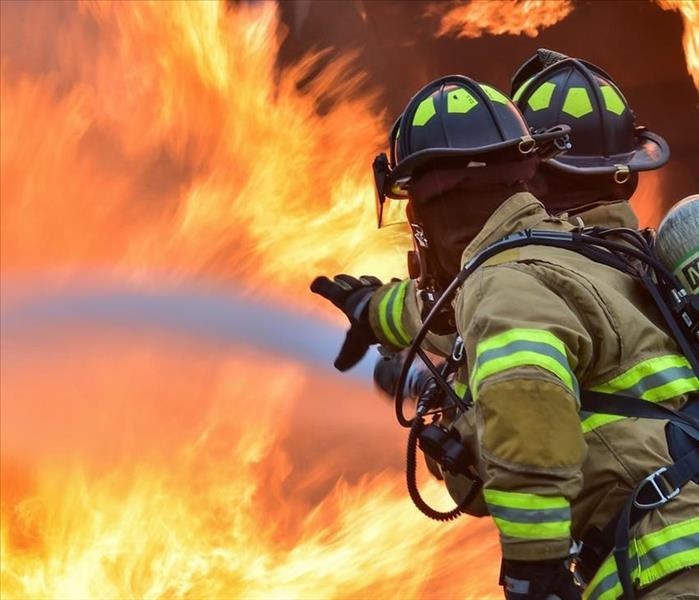 Fire Safety
Fire Safety
In less than two minutes after a fire starts, it can be life-threatening. In just five minutes, a home can become completely engulfed in flames.
Flames aren’t the only threat you’re facing when your home catches on fire. Smoke and heat can be even more dangerous than the fire itself. Nearly three times more people die from suffocation than from burns. The toxic fumes can cause you to become delirious making it harder for you to escape.
You can prevent your home from going up in flames but practicing smart fire safety. Most home fires are caused by carelessness, here are some of the leading causes of house fires and how you can prevent them.
Top 3 Causes of House Fires
- Cooking
Cooking causes almost half of home fires. Leaving food unattended in by far the biggest factor and of course, frying is the most dangerous method.
How do I reduce the risk?
- Always stay in the kitchen when you are cooking.
- If you have to leave the room, turn the burners off.
- Keep flammable materials like towels, curtains, oven mitts, etc, away from cooking areas.
- Keep a metal lid handy to smother grease fires- never put water on a grease fire. That will only make it worse.
- Make sure you have a multipurpose fire extinguisher for your kitchen.
- Smoking
While cooking is the leading cause of house fires, smoking is the number one cause of death. Smoking is responsible for 19% of house fire deaths. Most of those killed were in the bedroom, living room or den when the mattresses, bedding, or upholstered furniture caught fire.
How do I reduce the risk?
- If you smoke, do it outside.
- If you choose to smoke indoors, make sure you have a deep and wide ashtray and be sure that it is left on a sturdy table to prevent the tray from falling.
- Never light up when you are sleepy or under the influence. You should always be alert when you are smoking, especially if you are smoking indoors.
- Heating Equipment
We have to heat our homes, but improper use of equipment can be dangerous. Most home heating fires happen on winter evenings. Space heaters cause two out of every five fires.
How do I reduce the risk?
- If you must use a space heater, keep it at least three feet away from anything flammable including bedding, mattresses, clothing and upholstered furniture.
- Turn portable heaters off when you leave the room or go to sleep.
- If you have a fireplace, always use a screen and have your chimney professionally cleaned at least once a year.
- NEVER heat your home with your oven.
No one ever expects that they will be a victim of a home fire. Don’t let being a victim be the reason you take extra precautions. Start now and prevent the accident altogether. Of course, not all accidents can be prevented, that’s why they are called “accidents”. Should you experience a home fire knowing who to call is a vital key to getting the problem resolved as quickly as possible.
Who do I call?
- 911- at the first sign of a home fire call 911 to get your local first responders en route to stop the fire from spreading.
- Call SERVPRO of South Chesterfield/Wildwood. Once the first responders put out the fire, no matter the size, SERVPRO is here to help make it look "Like it never even happened." We are here to help take care of your home and get you back into your normal routine as fast as possible.
Have questions? Call (636) 537-5400
6 Tips To Practice With Elderly or Disabled In Case of a Fire
4/8/2020 (Permalink)
Most people know what to do should a fire occur, but do you know what to do if someone you know is older or has disabilities and isn’t capable of the same escape plan you are? Whether it is you, a family member, a friend, a neighbor or even a tenant these 6 tips are good for everyone to know and practice in case of an emergency.
- If you live in an apartment building, if at all possible, try to live on the ground floor, you will be safest there. If you live in a multi-story home, plan to sleep on the main level close to exits
If you are in a wheelchair, make sure to check all exits to see if you are able to get through them safely.
Make any necessary accommodations, such as providing exit ramps and widening doorways.
Practice your escape plan with family, neighbors and even building managers.
Contact your local fire department's non-emergency line and explain your special needs. Ask emergency providers to keep your special needs information on file.
Always keep a phone near your bed so you can call 9-1-1 in case a fire occurs.
For more information on fire escape plans visit https://www.ready.gov/home-fires.
Fire Insurance for Renters
3/4/2020 (Permalink)
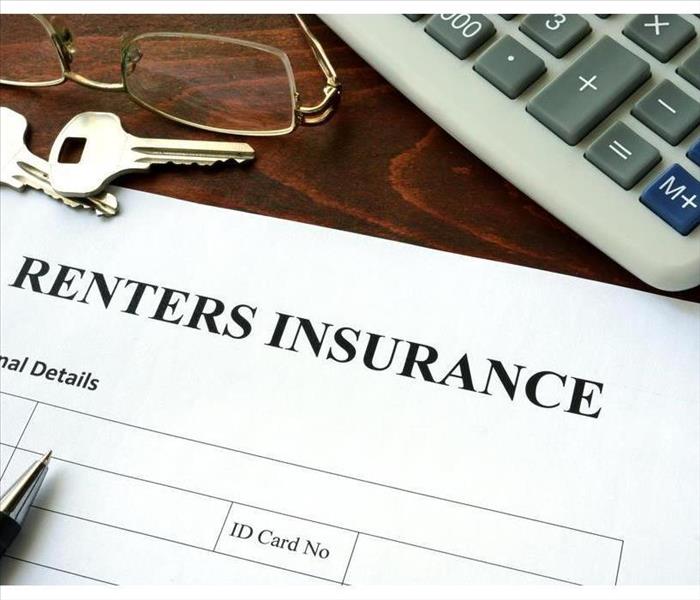 It is important to understand how renters insurance covers fire damage
It is important to understand how renters insurance covers fire damage
A fire at your Ballwin, MO, rental home can be a very stressful event. Fortunately, insurance can help you with everything from temporary living expenses to contents restoration. It is important to understand how renters insurance covers fire damage so that you will be prepared if you ever experience a home fire.
What Insurance Covers
As a renter, your policy will not cover the actual building structure in the event of a fire. The landlord’s insurance will cover that. Many insurance policies for renters will cover the following in the event of a non-criminal fire:
- Liability
- Third party medical expenses
- Temporary relocation expenses
- Contents
The exact coverage varies from policy to policy, so be sure to check with your agent to ensure you have sufficient coverage. Additionally, make sure your contents coverage will pay replacement cost rather than actual cash value. Due to depreciation, it may be very difficult to replace your belongings if you are only insured for their current value.
How To Document Fire Damage
When you file a claim with your renter's insurance, the first thing to do is call your insurance company. They may have specific instructions for documenting fire damage. You will likely need to take detailed photo or video of the property. The insurance company will also schedule to send an adjuster to assess the damage. Ideally, you will have a home inventory on hand. This is a list of all the items you own, including purchase dates and prices for expensive items such as furniture and electronics. You should create the inventory when you move into your home, update it regularly and keep a copy, either physical or digital, in a secure location.
After you have documented all the damage and filed a claim with your renters insurance, it is time to begin the fire restoration process. Depending on the extent of the damage, you may need to hire a certified restoration company to help you get your belongings back to pre-fire condition.
Renter’s Insurance : Does it Cover Home Fire Damage?
12/6/2019 (Permalink)
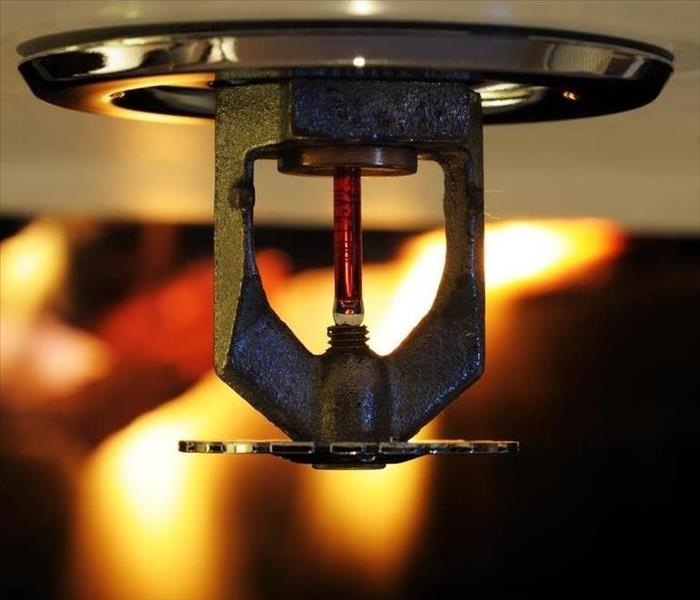 It’s important to confirm you are covered, regardless of the fire source.
It’s important to confirm you are covered, regardless of the fire source.
Residential fires can cause significant property damage, not to mention the stress and upheaval for the residents. If you have had a fire in your Chesterfield, MO, home or apartment, you have many questions to answer, including whether your fire damage will be covered. Having some details about renter's insurance may help you understand your options.
Fire Coverage Basics for Renters
Fire insurance can look very different from one policy to another. Here are the basic categories you will see in most fire policies for renters.
Personal Property – Reimburses you for your personal property losses
Liability – Allows your policy to pay others who sustain loss or injury from a fire in your residence
Natural Peril – Mandates you be covered if your fire was started due to a natural disaster or severe weather event
Mandatory Evacuation – Allows you to be reimbursed for living expenses should you be forced to evacuate your home
Loss of Use – Provides reimbursement expenses if you need to move out of your home during fire cleanup and restoration
While these categories will generally be consistent, the coverage may vary for certain details. These variables can affect your bottom-line coverage considerably.
Fire Policy Exclusions and Variables
When weighing a renter's insurance policy, you can start by comparing the deductibles and coverage limits for the various categories. Your policy will cover some portion of the fire damage remediation work, but you may find varying provisions about how your property loss values are reimbursed. Replacement-value coverage is far superior to current-value coverage. Without the replacement-value designation, you may be left with a damaged nine-year-old sofa, reimbursed at a fraction of its replacement value.
You may find some policies have special exclusions for the cause of the fire. It’s important to confirm you are covered, regardless of the fire source.
Whether you are shopping for renter's insurance or evaluating your current policy, these details may help you understand your choices. If you require fire restoration in your home, the better you understand your policy, the more informed you will be while navigating the remediation process.
3 Reasons You Should Board Up Your Home After a Fire
10/9/2019 (Permalink)
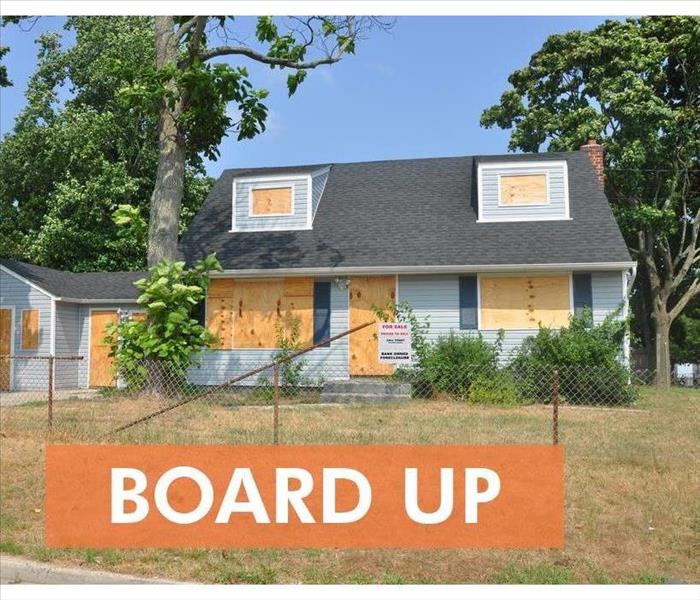 Board up home in Ellisville, MO
Board up home in Ellisville, MO
3 Reasons You Should Board Up Your Home After a Fire
If your Ellisville, MO, home has been damaged in a fire, then you will likely need to have repairs done. Depending on the severity of the damage, you may need to board up the house. This is needed when the fire has affected significant portions of your home and there are missing areas in the walls and roofing. It may be needed for broken doors and windows as well. The following are some reasons why this should be done.
1. Keep Out Unwanted Visitors
When your home is damaged in a fire, it makes it easy for both people and animals to make their way inside. This can result in theft of your valuable items. Animals may cause further damage by chewing or clawing at your belongings or the walls. Having board up services done will help keep out unwanted visitors of all kinds.
2. Prevent Damage From the Weather
If your house has severe damage, then it can take a while to complete repairs. Emergency board up helps to prevent further damage during this process. If it is not done, heavy winds can blow dirt, leaves and debris into your home, and rain can cause a lot of additional water damage that will extend the needed time for repairs.
3. Ensure Insurance Coverage
In many cases, your insurance company will require mitigation to be done to keep the time and cost of repairs at a minimum. If you do not do this, your claim could end up being denied. Along with board up services, mitigation can include removing water, relocating damaged items and cleaning up soot and smoke damage.
If your house has been damaged in a fire and you need to have it boarded up, contact a fire damage remediation company right away. They will be able to perform this service as well as others you may need. They can clean and sanitize the area and may be able to salvage damaged belongings.
Business Income Coverage Can Help After Fire Damage
9/17/2019 (Permalink)
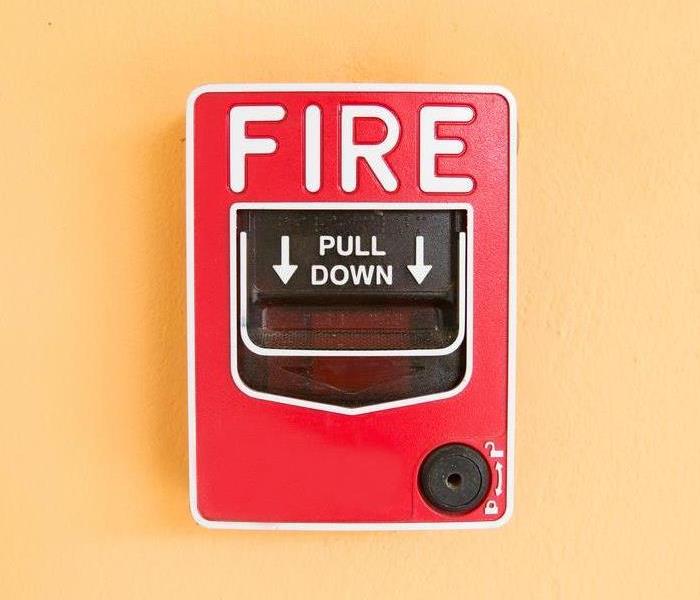 There are many things you can do on your own in your efforts to get the best out of your interruption insurance.
There are many things you can do on your own in your efforts to get the best out of your interruption insurance.
If your business has recently suffered fire damage in Chesterfield, MO, having interruption insurance can help you get back on your feet more easily. This type of policy, designed to protect against business interruption, can help cover some of the direct and indirect losses from the fire while you rebuild. This, together with the reconstruction advice you can get from a fire restoration company, can help you quickly get back to business as usual. To get the best out of your policy, here are a few tips to keep in mind:
1. Review the terms and conditions of your policy.
As a first step, it is a good idea to refamiliarize yourself with the key provisions of the most up-to-date version of your policy document so you know the exact recovery costs you can claim.
2. Get in touch with your agent.
Your next step should be to contact your agent to get the process going. You can get short-term interruption insurance coverage to meet your most immediate costs such as those related to the repair and reconstruction of the fire site, as well as those for the security and protection of the property. You could also be able to cover expenses you incur to continue to run the business, including but not limited to the use of a temporary location.
3. Keep track of everything.
Receipts, documents, and other proof of expenses will be important for your claim, so it is advisable to keep all such evidence safe and securely filed away. At this point, you should also be cautious about signing any claim document that indicates the entire amount due, as it will take some time to determine this figure. Be sure to carefully read any document that requires your signature.
There are many things you can do on your own in your efforts to get the best out of your interruption insurance. That said, you should not hesitate to get professional help when there is a need for it.
How To Avoid Space Heater Fires
7/17/2019 (Permalink)
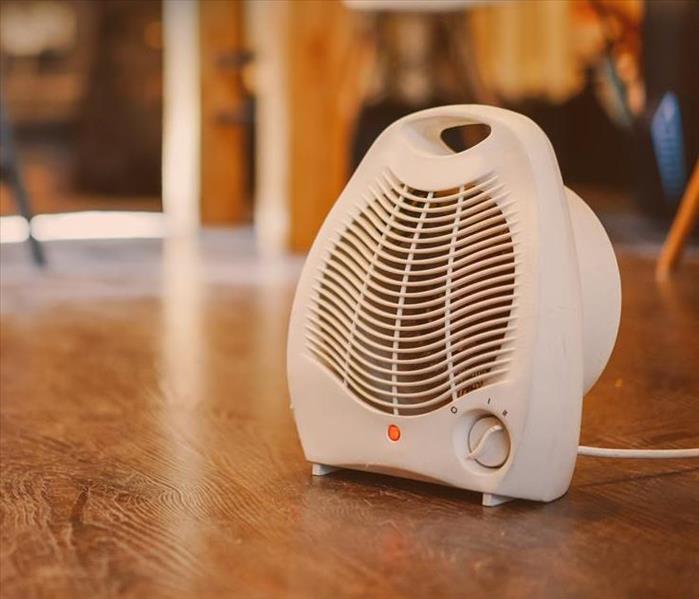 Keep your space heater clean
Keep your space heater clean
Tips on Using a Space Heater
An extra blast of warmth on a cold night can be a great comfort. A burned space heater, however, is nothing but trouble. Here are some tips on using the space heater in your home in Ballwin, MO, safely.
Give the Heater Space
Your heater needs its space. It must be three feet from materials that are flammable at all times. This may mean that you can't use a space heater in some rooms. Many rooms, such as workshops, have combustible substances in them:
- Paint and paint thinner
- Different types of oils
- Solvents
Children and pets should also stay away from the space heater. Put it in a place where it is at least three feet out of their reach.
Keep an Eye on the Heater
A personal heater should never be on when an adult is not in the room. For this reason, it is not advisable to put one in child's room. Even if you are only leaving the area for a little while, go ahead and turn it off, or you may come back to a burned space heater. Being close enough to observe it is the only way you have of knowing if something goes wrong and thus the only way you have of preventing further damage. To be extra safe, you may even consider unplugging it when it's not in use.
Clean and Maintain the Heater
Just like anything else in your home, your space heater can collect dust. If it builds up, it can cause a fire. Smoke cleanup experts recommend frequent cleaning of your space heater according to the manufacturer's instructions in the manual. Keeping the heater clean can help keep your home safe.
No one wants a burned space heater in their home. Follow these safety tips and take care of your heater, and you can enjoy cozy warmth without worrying about a house fire.
Understanding Emergency Response Cleaning After a Fire
7/12/2019 (Permalink)
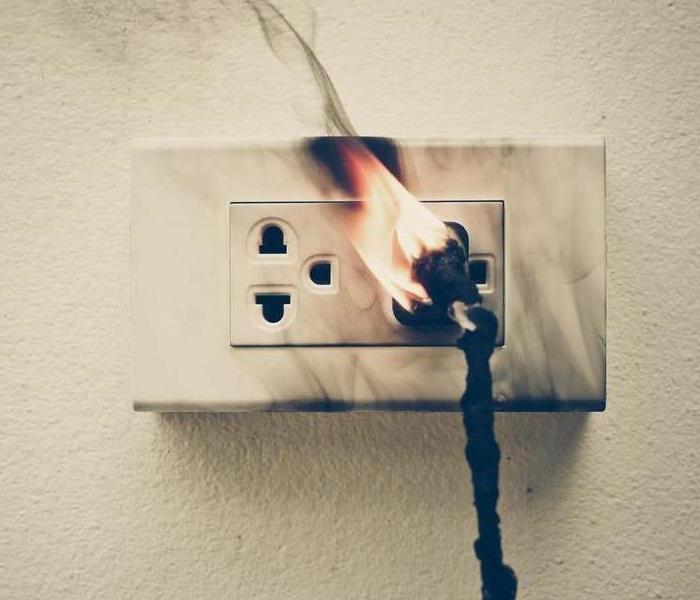 Time is of the essence after a fire.
Time is of the essence after a fire.
Fire and smoke damage can change the appearance and even the structure of a piece of property so drastically that it is difficult to imagine ever being able to call it home again. However, through the miracles of emergency response cleaning and restoration services, you can go back home. There are four distinct phases of the cleaning process that occur before the restoration and reconstruction phases, but these phases aim to salvage as much as possible of your property and its structure.
1. Board-Up and Tarping
Before anything can be done about the fire, smoke and soot damage, a restoration company will want to ensure that your property is secure and protected from all natural and unscrupulous elements. The board-up and tarping of your property serve as both a protection and a mitigation practice. These services reduce the homeowner's risk to outside liabilities and thereby secure the insurance process for financial recompense.
2. Water and Debris Removal
Once the property is protected but before any smoke damage can be addressed, the restoration crew will likely begin removing any visible debris and water buildup. While it may seem odd to discuss excessive water when dealing with fire damage, the efforts used to save your property will likely lead to flooding of some kind, especially if the blaze was significant.
3. Smoke and Soot Removal
After the area has been cleared of debris and water, the soot and smoke cleaning can begin. Cleaning professionals will likely use various techniques and chemicals to clean all hard and porous surfaces. For fabrics, rugs and other removable materials, professional cleaners may be called in to help.
4. Cleaning and Deodorizing
Most fire restoration specialists in the Chesterfield, MO area will recommend a thorough cleaning, disinfecting and deodorizing of the property before moving on to the reconstruction phase of the restoration. During this phase, professional cleaners will likely use different chemical solutions to ensure the home is safe and odor free.
Fire and smoke damage can eliminate the appearance of your home. However, with proper cleaning and response times, it is possible to get your home back.
Cleaning Fire and Smoke Damaged Home Contents
7/10/2019 (Permalink)
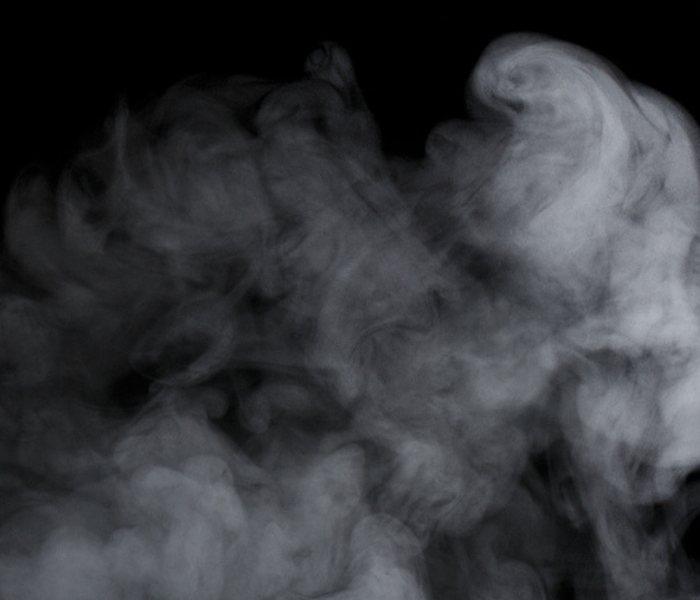
When someone in Chesterfield, MO suffers a home fire, they are also likely to suffer a certain amount of loss. Those losses can come in the form of personal belongings such as clothing, household belongings and furnishings, and even the structure itself. Many items might be salvaged by dry-cleaning, steam cleaning or ultrasonic treatments, but how do you determine which can be saved?
Fire assessment and restoration professionals may be able to rescue a good deal more than you would expect. Content cleaning is one of their specialties and is a valuable service to a family that has just gone through the trauma of a fire.
How a Restoration Service can Help With Fire Cleanup
•Clothing, curtains, bedding and other fabric items that are not fire damaged may be treated by dry cleaned to remove the odor of smoke
•Non-porous or hard surfaced items may be cleaned of chemical residue and smoke odor by ultrasonic treatments and an ozone generator can help destroy bacteria and smoke odors throughout the home
•Electronics or appliances that have not suffered water damage may be evaluated for repair or replacement
•Documents, papers, photos and books may be put through a gamma irradiation process to disinfect and preserved them
•Cleaned items may be temporarily moved to a content storage facility to keep them from being re-contaminated until the home is ready to move back into.
Get the Help You Need
It can be overwhelming to face a house full of burned, water damaged or smelly, smoke damaged items. You may feel all is lost, but in many cases items can be salvaged. Restoration techs in Chesterfield, MO will be able to help with deciding which things can be saved which things need to be discarded.
Content cleaning is an important part of restoring your home. Using everything from dry-cleaning to ultrasonic treatments to save some of your belongings, your home can soon be “Like it never even happened." Visit https://www.SERVPROsouthchesterfieldwildwood.com/ for more information on fire damage.
How to Make a Fire Escape Plan
7/5/2019 (Permalink)
During an emergency, it can sometimes be difficult to think clearly. Preparing ahead of time can make it easier to handle a fire in your Chesterfield, MO home. Using the following steps to create a fire escape plan is one way to ensure your family makes it out of the home safely.
1. Locate All Potential Exits
The first step in fire preparation is to inspect your home for any possible exits. This should include all doors and windows. Make sure that everyone is aware of these locations. For younger members of the family, it can be helpful to have a map of the home with clearly marked exits.
2. Include All Members of the Family
When you are creating your fire escape plan, you should make sure that all members are accounted for in the plan. If you have elderly or disabled family members that might have trouble making it out of the house on their own, be sure to designate another member to assist them during the emergency. Assign members to be responsible for pets and babies as well.
3. Have a Designated Meetup Area
Depending on the severity and location of the fire, everyone may not be able to use the same route to exit the house. Choosing a meeting place outside of the home will allow you to determine quickly whether everyone has made it outside.
4. Practice Regularly
Particularly for families with younger children, it is important to practice your fire escape plan regularly. This will ensure that everyone is prepared in case a fire does occur. You should do this at least twice a year.
If you experience a home fire, the safety of you and your family should always be the first priority. Don’t stop to grab your belongings on the way out. A fire damage remediation company can help clean up and repair your home as well as any damaged property after the danger has passed.
Preparing Your Business For an Emergency
6/26/2019 (Permalink)
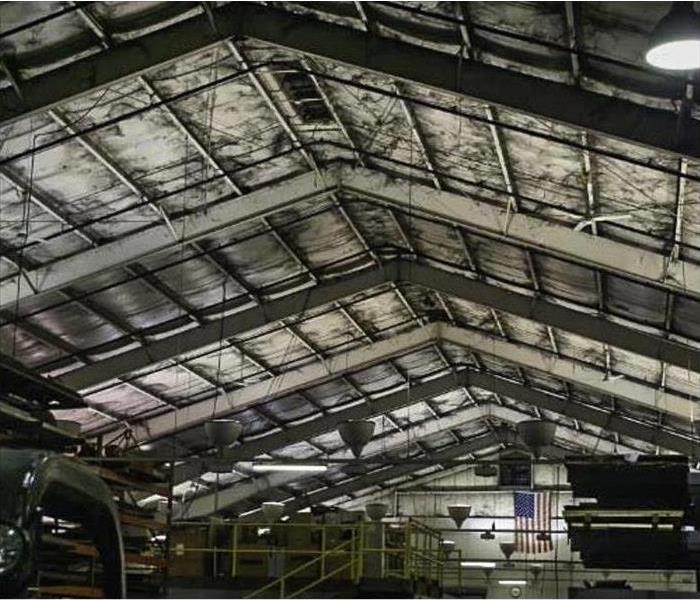 Fire damage in an Eureka, MO fabric
Fire damage in an Eureka, MO fabric
Preparing Your Business For an Emergency
Most businesses in Eureka, MO, believe they are adequately prepared for an emergency. Smart business owners know that it only takes one catastrophic event, whether a flood, fire, or hurricane, to disrupt operations and permanently close the doors. Therefore, companies should do as much as possible to plan for the unthinkable. The following steps will help make sure you are in a comfortable position to deal with any business interruption.
1. Develop a Detailed Contingency Plan
It’s essential to have a very detailed contingency plan that accounts for all possible events. It should contain a prioritized list of essential business functions and the order in which they should be restored. It should also have the contact information of trusted restoration experts to make sure the company can begin running again as soon as possible.
2. Check Your Insurance
Of course, all facilities need to have insurance coverage for damages. A basic policy will help replace damaged goods or help with fire restoration, for example, but it doesn’t make up for lost revenue while a factory is not running. Interruption insurance is something more business owners are considering. This coverage pays out when normal operations can’t continue due to damage. Interruption insurance often covers not only losses due to the damage, but also slower revenue directly after an issue has been repaired.
3. Disseminate Your Plan
A contingency plan is only good if employees know where to access it and what to do in the event of an emergency. Make sure to ask for feedback, since your employees are experts in the areas that will need to be restored. A call tree, with key decision makers identified, is a good idea to help provide direction in a time that could be chaotic.
Emergency preparedness starts with a contingency plan and covering all potential losses through interruption insurance. The best plans are well thought out and explained to every employee through new hire training and annual reminders. A good plan will leave you with the peace of mind that you are ready for any disaster, and your business will continue to thrive long afterwards.
Winter Is Coming Advoid A Chimney Fire In Your Home
9/14/2018 (Permalink)
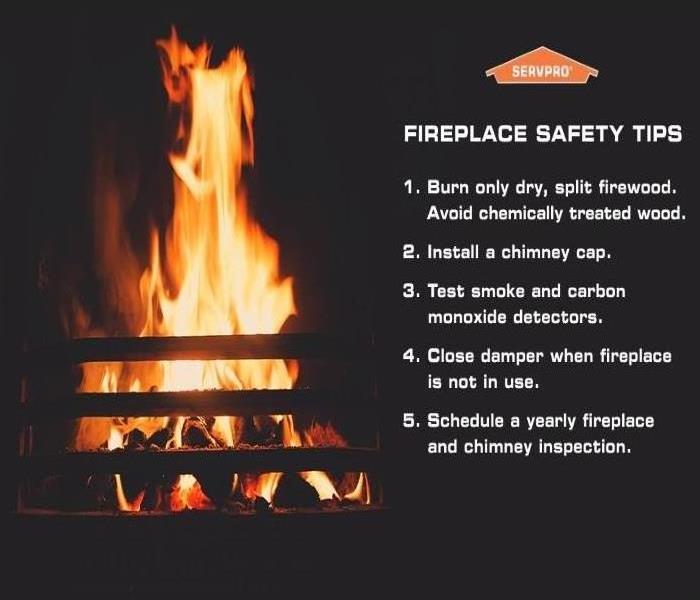 Keep Warm And Safe
Keep Warm And Safe
Here at SERVPRO of South Chesterfield Wildwood we see many of the preventable fire each year. The Majority of Chimney Fires Go Undetected
Slow-burning chimney fires don’t get enough air or have fuel to be dramatic or visible and they often go undetected until a later chimney inspection, but, the temperatures they reach are very high and can cause as much damage to the chimney structure – and nearby combustible parts of the house – as their more spectacular cousins.Creosote & Chimney Fires: What You Must Know
Fireplaces and wood stoves are designed to safely contain wood-fuel fires while providing heat for a home. The chimneys that serve them have the job of expelling the by-products of combustion – the substances produced when wood burns. These include smoke, water vapor, gases, unburned wood particles, hydrocarbon, tar fog, and assorted minerals. As these substances exit the fireplace or wood stove and flow up into the relatively cooler chimney, condensation occurs. The resulting residue that sticks to the inner walls of the chimney is called creosote.
Creosote is a black or brown residue that can be crusty and flaky…tar-like, drippy and sticky…or shiny and hardened. All forms are highly combustible. If it builds up in sufficient quantities – and the internal flue temperature is high enough – the result could be a chimney fire.
Conditions that encourage the buildup of creosote:
- restricted air supply
- unseasoned wood
- cooler than normal chimney temperatures
Air supply may be restricted by closing the glass doors, by failing to open the damper wide enough, and the lack of sufficient make-up air to move heated smoke up the chimney rapidly (the longer the smoke’s “residence time” in the flue, the more likely is it that creosote will form). A wood stove’s air supply can be limited by closing down the stove damper or air inlets too soon or too much. Burning unseasoned wood – because so much energy is used initially just to drive off the water trapped in the cells of the logs– keeps the resulting smoke cooler, then if a seasoned wood is used. In the case of wood stoves, overloading the firebox with wood in an attempt to get a longer burn time also contributes to creosote buildup. Source:Chimney Safety Institute of America
Fire Safety Smoke Alarm Tips In Chesterfield, MO
7/30/2018 (Permalink)
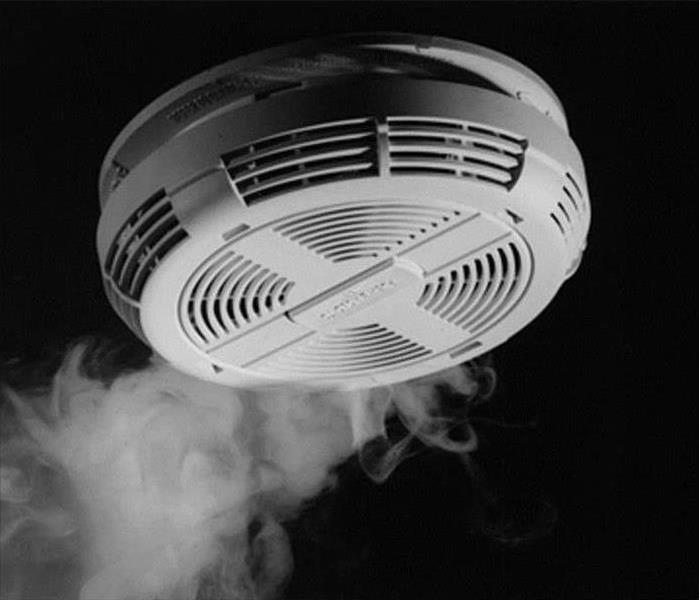 Check Your Smoke Alarm Often
Check Your Smoke Alarm Often
- Install smoke alarms in every bedroom. They should be outside each sleeping areas and on every level of the home.
- Large homes may need extra smoke alarms.
- It is best to use interconnected smoke alarms. When on smoke alarm sounds, they all sound.
- Test all smoke alarms at least once a month. Press the test button to be sure that the alarm is working.
- Current alarms on the market employ different types of technology including multi-sensing, which could include smoke and carbon monoxide combined.
- Today's smoke alarms will be more technologically advanced to respond to a multitude of fire conditions, yet mitigate false alarms.
- A smoke alarm should be on the ceiling or high on a wall. Keep smoke alarms away from the kitchen to reduce false alarms.
- People who are hard of hearing or deaf can use special alarms. These alarms have strobe lights and bed shakers.
- Replace all smoke alarms when they are 10 years old.
*Source: NFPA-Nation Fire Protection Association
Most Common Causes of House Fires
1/8/2018 (Permalink)
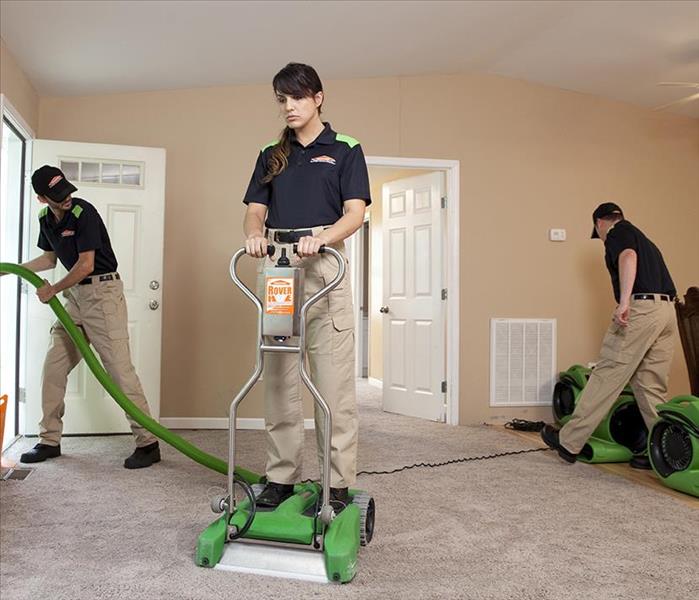 Be prepared for what ever happens.
Be prepared for what ever happens.
Here are top 5 most common causes of house fires as identified by the National Fire Protection Association.
- Candles
From 2007-2011, the NFPA says there were an average of 10,630 fires in the U.S. that were started by candles, causing 115 deaths, 903 injuries and approximately $418 million in property damage. That is an average of 29 candle fires per day.
Safety tips:
- Never leave a candle burning near flammable items.
- Never leave a candle burning in a child’s room or an unoccupied room.
- Make sure candles fit securing into candle holders so they won’t tip over.
- Blow out any candles before leaving a room or going to sleep
- Smoking
While the number of fires caused by smoking is trending downward, the NFPA found that there were still an average of 17,600 related fires per year resulting in 490 deaths and more than $516 million in property damage.
Safety tips:
- If you smoke, consider smoking outside.
- Use wide, sturdy ashtrays to catch butts and ashes.
- Look for cigarette butts under furniture and between seat cushions to make sure no lit butts have fallen someplace where they can’t be seen.
- Don’t smoke in bed, when you’re tired or around medical oxygen.
- Electrical & Lighting
According to the NFPA, in 2011 approximately 47,700 home structure fires were caused by some sort of electrical failure or malfunction. These resulted in 418 deaths, 1,570 injuries and $1.4 billion in property damage.
Safety tips:
- Don’t overload outlets or electrical cords.
- Make sure you have the right cord for the job – inside cords for inside, heavy duty/outside cords for outdoor use.
- Don’t leave Christmas lights, Christmas trees, or halogen lights on overnight or when not at home.
- Consider having an electrician perform an annual checkup of your home’s wiring.
- Dryers & Washing Machines
Clothes dryer fires happen more often than one might think, accounting for 16,800 home structure fires in 2010 and doing more than $236 million in property damage.
Safety tips:
- Clean the lint screen frequently and don’t run the dryer without it.
- For gas and propane dryers, make sure there aren’t any leaks in the lines.
- Vent the dryer to the outside of the house and ensure nothing blocks the vent pipe.
- Clean the vent pipe and the area where the screen is housed.
- Keep the area around the dryer free of combustible materials.
- Lightning
From 2007-2011, NFPA says there were an average of 22,600 fires per year caused by lightning strikes.
Safety tips:
- Stay away from doors and windows during an electrical storm.
- Do not use corded phones, computers, TVs or other electrical equipment during storms.
- Unplug major electronics – TVs, stereo equipment, computers and microwaves to minimize damage if there is a lightning strike close by.
- Avoid plumbing such as sinks, baths and faucets during a thunderstorm.
Have Questions? Call Us Today – (636) 537-5400
Impact of Fire Damage on Your Property
1/8/2018 (Permalink)
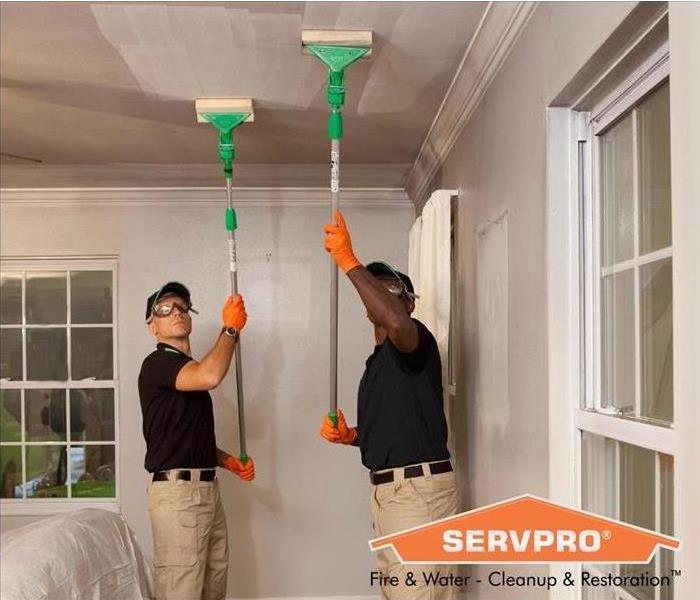 Fires cause unforeseen damage to your home!
Fires cause unforeseen damage to your home!
Fire damage can have a detrimental impact on a person’s life. Whether there is a fire in home, or a fire in business, fire loss can be heart breaking. Soot damage and some damage can ruin so much of a person’s home. Not only is the fire itself terrible and devastating, but the actual fire cleanup can be awful as well. If a fire has recently occurred and caused commercial fire damage, or if the fire damage occurred die to a fire in home, this article is here to help you determine the best ways to address the aftermath.
First before any fire cleanup can occur it’s important to make sure that the fire in home or the fire in business is no longer a safety risk, especially if there was commercial fire damage. The local fire department can determine whether there is still a health risk in returning to cleanup the fire damage, the soot damage, or the smoke damage that has occurred. Fire loss is no laughing matter and should be addressed sagely and carefully.
Once you have had the notification that it’s now safe to enter your home to start the cleanup process, the actual soot damage, smoke damage, and amount of fire loss can be appraised. This can help to get the fire cleanup process settled so that you know the extent of the damage and make a plan to combat the fire damage. Before anything it’s important to stat ti our out the building, whether the damage was from a fire in home, or a fire in business. This will help the air quality and allow the prices of the cleanup of the soot damage or smoke damage to begin.
To start cleaning the soot damage and smoke damage it is absolutely crucial to make sure the air quality is fine before you begin, because too much smoke can have a detrimental impact on your heath. To begin this fire cleanup from the fire in home, fire in business, or commercial fire damage, you will need protective frat such as rubber gloves and eye protection. A bucket and spine will also be needed so that the soot damage can be scrubbed off from the walls. There are cleaning solutions that are available commercially to help you with this project. To make extra sure that the air quality is suitable it may be necessary to open a window. This is to ensure the air quality is not impacted by any apsidal smoke, and the air quality is not impacted by the cleaning agents being used.
After the walls have been cleaned the fire cleanup from other areas can being. Now the fire loss impact must be determined, and the items from the fire loss must be cleaned or discarded if they are beyond repair. This fire cleanup hopefully will not be too substantial, but it may be. If there is a large scale of destruction to may be a better idea to call professionals who can evaluate the damage and clean the mess for you. However, even if there was a fire in business or commercial fire damage you may be able to take care to the situation yourself be removing the soot form the commercial fire damage with a vacuum cleaner and rags.
Have Questions? Call Us Today – (636) 537-5400
Candle Safety In Your Home in Chesterfield Wildwood, MO
12/24/2017 (Permalink)
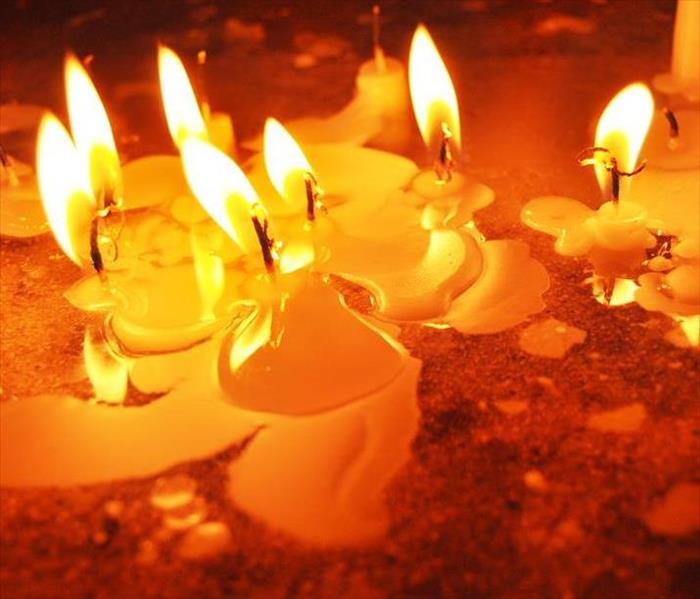 Safety First
Safety First
Here at SERVPRO SOUTH CHESTERFIELD WILDWOOD
We have seen many candle fires in our community, Below are some tips how to prevent a fire in your home. Candles are beautiful but they can be devastating as well.
Candle Safety
On average 25 home candle fires start every day. The simple nature of candles having an open flame is the key to why they can be so dangerous. CCFR recommends using battery operated, flameless candles.
According to the National Fire Protection Association (NFPA), more than half of all candle fires start because candles were too close to things that could catch fire.
If you use regular candles, they need to be:
• At least a foot away from anything that can burn (curtains, walls, lamps, Christmas trees, etc.)
• Attended at all times (never leave a child alone in a room with a candle)
• Used in sturdy, enclosed candleholders
• Placed in areas where they cannot be tipped over
• Avoided in homes where oxygen is used
Avoid using candles in the bedroom, where more than one-third of home candle fires begin, or other areas where people may fall asleep. In the event of a power outage use flashlights or other battery-operated power, not candles to light your home.
Avoid using candles in the bedroom, where more than one third of home candle fires begin, or other areas where people may fall asleep.
http://www.SERVPROsouthchesterfieldwildwood.com/fire-smoke-damage-restoration
FLOOD, FIRE, EARTHQUAKES AND TWISTERS
12/20/2017 (Permalink)
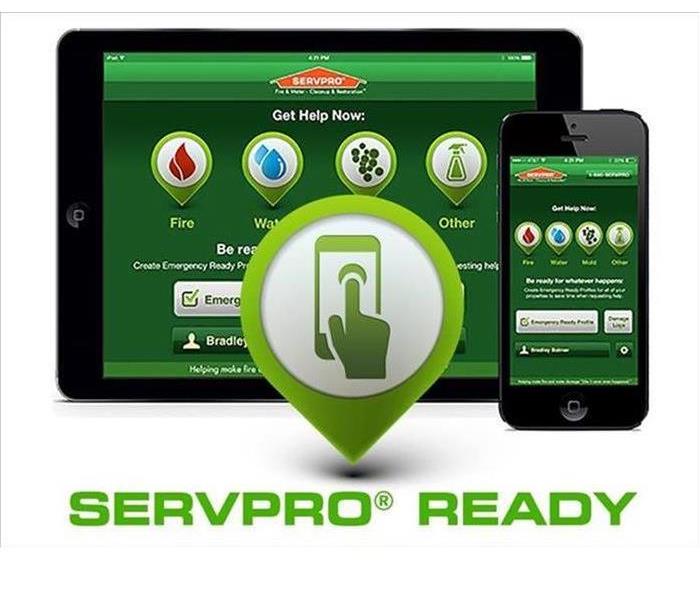 Be ready for any event.
Be ready for any event.
Article From Our First Responders Monarch Fire Protection Chesterfield, MO
Everyone who has watched the news this year has seen areas flooding from hurricanes and rain; fires destroying forests, crops and homes; earthquakes toppling houses, stores and factories; and tornadoes destroying everything in their path. Fortunately, the worst missed our area this year. Unfortunately, we have seen floods from rain and rivers, fires consuming homes and businesses; earthquakes doing minor damage (the last severe one was the New Madrid earthquake in 1811/1812) and tornadoes with their associated destruction here in Monarch or very nearby. While no one can fully prepare to weather every calamity, the Monarch Fire Protection District is ready to respond to our residents and businesses when misfortune calls. We have five fire houses across the District with more than 100 professionals ready to help. Everyone knows we have fire trucks ready to roll within minutes of receiving a call for help and ambulances staffed with paramedics and excellent equipment to assist with medical emergencies. However, we do much more. Monarch is home to a regional heavy hauler that is designed to provide confined space rescue for victims trapped in collapsed buildings or trenches with about 50 firefighters trained to use the specialized equipment. We also have boats and personnel trained for swift-water rescues. We team up with the St. Louis County Police to provide helicopter rescues using their helicopter and pilots and our rescue personnel. We operate and staff a designated Rescue Truck when the need arises which carries tools to extricate victims trapped in vehicles and other rescue equipment. Then, of course, we participate in area events and in District training to hone the skills needed to perform these duties. However, Monarch, the Department of Homeland Security and the State of Missouri all recommend everyone take a few basic steps to help themselves. Under normal circumstances, Monarch crews and equipment is minutes away, but, what if a major disaster strikes the area. First, everyone should have a minimum of three days of non-perishable food (don’t forget a manual can opener in case the electricity is off) and water for each family member. You should have a flashlight with fresh batteries and you may want to get a few emergency candles and matches. A simple first aid kit is very inexpensive. Make sure you have a few simple tools (hammer, nails, screw drivers, pliers, crescent wrench and, perhaps, even some vice grips or locking pliers). Make sure you know where to shut off the gas and water to your home in case there is a leak. For a few dollars, you can buy a special wrench designed for the gas shutoff. Keep cell phones charged or have an external charging device. A comprehensive list could become quite long but just a few simple items can make a big difference when calamity strikes. To borrow from the Boy Scouts, “Be Prepared”.
http://www.monarchfpd.org/
Chesterfield Wildwood Smoke and Soot Cleanup
12/18/2017 (Permalink)
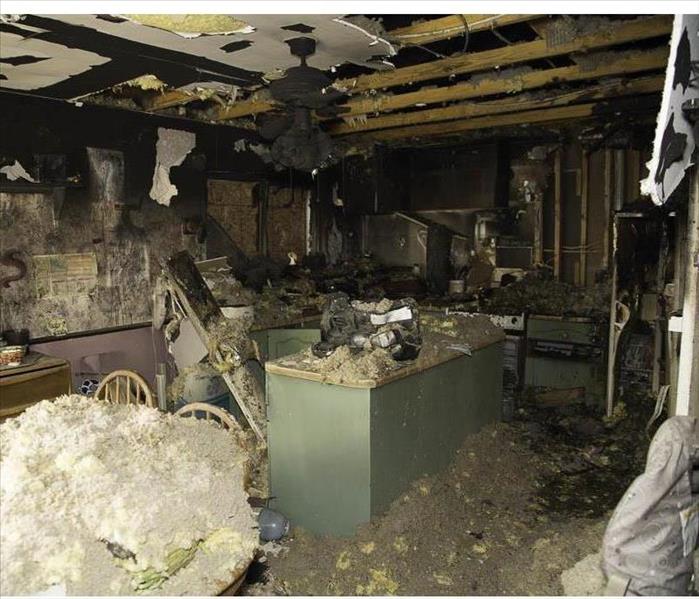 Severe damage can be cleaned and restored.
Severe damage can be cleaned and restored.
Smoke and soot is very invasive and can penetrate various cavities within your home, causing hidden damage and odor. Our smoke damage expertise and experience allows us to inspect and accurately assess the extent of the damage to develop a comprehensive plan of action.
Smoke and soot facts:
Hot smoke migrates to cooler areas and upper levels of a structure.
Smoke flows around plumbing systems, seeping through the holes used by pipes to go from floor to floor.
The type of smoke may greatly affect the restoration process.
Different Types of Smoke
There are two different types of smoke–wet and dry. As a result, there are different types of soot residue after a fire. Before restoration begins, SERVPRO of South Chesterfield Wildwood will test the soot to determine which type of smoke damage occurred. The cleaning procedures will then be based on the information identified during pretesting. Here is some additional information:
Wet Smoke – Plastic and Rubber
Low heat, smoldering, pungent odor, sticky, smeary. Smoke webs are more difficult to clean.
Dry Smoke – Paper and Wood
Fast burning, high temperatures, heat rises therefore smoke rises.
Protein Fire Residue – Produced by evaporation of material rather than from a fire
Virtually invisible, discolors paints and varnishes, extreme pungent odor.
Our Fire Damage Restoration Services
Since each smoke and fire damage situation is a little different, each one requires a unique solution tailored for the specific conditions. We have the equipment, expertise, and experience

 24/7 Emergency Service
24/7 Emergency Service















